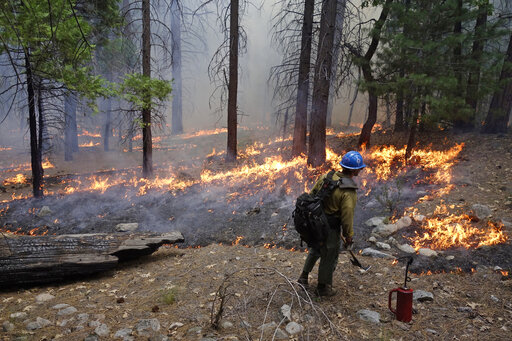For Moody’s Investors Service, it’s no longer enough for cities to have plans addressing their risks from climate change. The company’s municipal-bond analysts, armed with data, will soon determine how those strategies compare with others — and may change their credit ratings as a result.
Moody’s in July purchased a majority stake in climate research firm Four Twenty Seven Inc., which provides information the company is now using to evaluate how well local governments are girding for threats such as floods, fires and storms.
“We’re starting to get a sense of who’s really putting in the effort and putting together a quality plan and those that haven’t. We’re gaining a lot of expertise very quickly,” said Eric Hoffmann, a senior vice president. “We’re going to incorporate these particular risks and the degree to which the exposure has been mitigated by the hazard mitigation plan into the rating.”
Moody’s efforts show how the company is trying to distinguish itself among its rivals to meet the needs of municipal-bond buyers who want to assess how extreme weather events, exacerbated by climate change, will affect their investments in local governments. S&P Global Ratings and Fitch Ratings say they account for such threats in their ratings.
Some investors have grown frustrated with the companies — which during the financial crisis a decade ago came under fire for underestimating the risk of toxic mortgage-backed securities — over high ratings for communities vulnerable to risks from rising sea levels and devastating storms. In California alone, the biggest municipal-bond issuer, wildfires have not only become more frequent but more devastating. Last year’s Camp Fire, the deadliest in state history, wiped out most of the town of Paradise, killed 85 people and scorched 240 square miles.
“Anytime we see climate risk as being added on top of the credit story and not being integrated into the credit story, we tend to be a little bit more concerned about the value of the rating,” said James Lyman, director of research for the municipal fixed income team at Neuberger Berman. “It’s not a toggle switch.”
Moody’s recognizes that environmental risks eventually can lead to strains on local economies if left unaddressed, said Leonard Jones, the rating company’s managing director for public finance. “We want entities to have a mitigation or resiliency plan so that they don’t face that pressure and their ratings stay at a quality level,” Jones said. “If they can’t do anything about it, they’re going to face that pressure even sooner.”
Moody’s approach so far appears inconsistent, and it’s clear that it may take a while for its ambitions to be reflected in its thousands of bond ratings. Megan Kilgore, auditor of Columbus, Ohio, said analysts didn’t ask about climate risks in the review ahead of the AAA-rated city’s bond sale on Oct. 3 even though the company a few weeks earlier had published a report noting that the Midwest has about $69 billion in debt it rates exposed to high heat stress, the second-most vulnerable U.S. region after the Southeast.
Philadelphia Treasurer Christian Dunbar said that he thinks Moody’s — and the other rating companies — will eventually “benchmark” cities on how they gird for similar environmental, social and governance threats and incorporate that into the ratings.
“Over the last year or so, ratings agencies are starting to get more sophisticated in their questioning about ESG and especially about climate risk,” Dunbar said.
Was this article valuable?
Here are more articles you may enjoy.


 As Trump Considers Auto Tariffs Pause, Parts Exemptions Could Be Key for US Industry
As Trump Considers Auto Tariffs Pause, Parts Exemptions Could Be Key for US Industry  Merck Faces Patent Lawsuit Over Easier-to-Use Keytruda
Merck Faces Patent Lawsuit Over Easier-to-Use Keytruda  FEMA Denies Washington State Disaster Relief From Bomb Cyclone, Governor Says
FEMA Denies Washington State Disaster Relief From Bomb Cyclone, Governor Says  Forecast Calls for Wildfires to Burn More Land Across U.S. This Year
Forecast Calls for Wildfires to Burn More Land Across U.S. This Year 